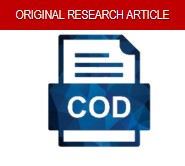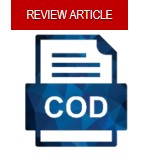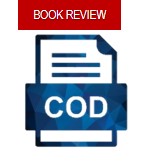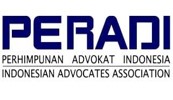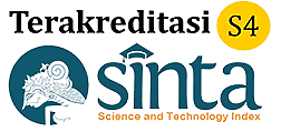Marriage Contract in the Presence of a Corpse
Legal Perspectives in Islamic and State Law
DOI:
https://doi.org/10.46924/jihk.v7i1.312Keywords:
Funeral Marriage, ʿUrf Ṣaḥīḥ, Islamic Law, Indonesian Positive LawAbstract
The tradition of conducting a marriage contract in front of the deceased parents’ bodies remains preserved in Aji Jaya KNPI Village, Gedung Aji District, Tulang Bawang Regency. Rooted in symbolic and spiritual motives—such as fulfilling the final wishes of the deceased and upholding family honor—this practice continues to be observed as a customary norm. This study aims to examine the validity of the practice from the perspective of Islamic law, assess its status through the concept of ʿurf ṣaḥīḥ, analyze the 40-day post-marital abstinence as a local customary prohibition, and construct normative arguments within the frameworks of Islamic family law and Indonesian positive law. Employing a descriptive qualitative methodology, data were collected through interviews, observations, and document analysis. The findings reveal that the practice is legally valid under Islamic law if the essential pillars and conditions of marriage are fulfilled, and may be classified as ʿurf ṣaḥīḥ when it does not contradict sharia principles. However, under Indonesian state law, the marriage holds no legal standing unless registered with the Office of Religious Affairs (KUA). In conclusion, this tradition reflects a form of legal and cultural syncretism between local customs, Islamic jurisprudence, and formal legal norms—requiring thoughtful management and contextual understanding.
Downloads
References
Anam, Afdolul. “Akad Nikah Di Hadapan Jenazah Orang Tua Dalam Perspektif Hukum Islam: Studi Kasus Kearifan Lokal Di Desa Petapan Kecamatan Labang Kabupaten Bangkalan.” Iqtisodina: Jurnal Ekonomi Syariah Dan Hukum Islam 3, no. 2 (2020): 1–8. https://doi.org/10.35127/iqtisodina.v3i2.4962.
Andika, Rindi, and Ismail Ismail. “Telaah Analisis Iddah Bagi Perempuan Berbasis Al-Qur’an Dan Sains.” Al-Bayan: Jurnal Ilmu Al-Qur’an Dan Hadist 6, no. 2 (2023): 312–28. https://doi.org/10.35132/albayan.v6i2.450.
Chaniago, Abdi Samra. “Memaknai Mitsaqon Ghalizha Sebagai Kunci Harmoni Keluarga Islam.” Jurnal Landraad 2, no. 2 (2023): 197–207. https://doi.org/10.59342/jl.v2i2.409.
Mubarok, Muham Muhammad, and Ahmad Ubaidi Hasbillah. “Limitasi ‘Iddah Dan Ihdad Wanita Pekerja Di Desa Jogoroto Kecamatan Jogoroto Kabupaten Jombang Perspektif Maslahah Mursalah.” Hamalatul Qur’an: Jurnal Ilmu Ilmu Alqur’an 5, no. 2 (2024): 114–33. https://doi.org/10.37985/hq.v5i2.165.
Muzadi, Sulton, and Muhammad Solikhudin. “Tradisi Pernikahan Kerubahan Gunung Perspektif Fenomenologi.” Salimiya: Jurnal Studi Ilmu Keagamaan Islam 3, no. 2 (2022): 44–60. https://doi.org/10.58401/salimiya.v3i2.685.
Rahmi, Raflina Vinidya, and Siti Khumairoh. “Perkawinan Di Depan Jenazah Dalam Perspektif Hukum Islam.” Jurnal Laboratorium Syariah Dan Hukum 3, no. 2 (2022): 162–179. https://doi.org/10.15642/mal.v3i2.128.
Rizal, Fitra. “Penerapan ‘Urf Sebagai Metode Dan Sumber Hukum Ekonomi Islam.” Al-Manhaj: Jurnal Hukum Dan Pranata Sosial Islam 1, no. 2 (2019): 155–176. https://doi.org/10.37680/almanhaj.v1i2.167.
Salamon, Dimas Abdul Fatah, and Dea Salma Sallom. “Interaksi Tradisi Jawa Dengan Nilai Islam: Tradisi Kawin Mayit Dalam Hukum Islam, Studi Kasus Di Kecamatan Malo Kabupaten Bojonegoro.” Jurnal Keislaman 7, no. 1 (2024): 137–48. https://doi.org/10.54298/jk.v7i1.250.
Ma’arif, Toha. “Fiqih Indonesia Menurut Pemikiran Hasbi Ash-Shiddiqi, Hazairin Dan Munawir Syadzali.” Ijtimaiyya: Jurnal Pengembangan Masyarakat Islam 8, no. 2 (2015): 27–56. https://doi.org/10.24042/ijpmi.v8i2.910.
Thesis
Aminah, Siti. “Tradisi Kawin Mayyit: Studi Tentang Pandangan Tokoh Masyarakat Di Kecamatan Lumajang, Kabupaten Lumajang.” Universitas Islam Negeri Maulana Malik Ibrahim Malang, 2007. http://etheses.uin-malang.ac.id/46027/.
Fikri, Ilham Rais Al. “Akad Nikah Di Depan Jenazah Orang Tua Di Desa Pajaten Kecamatan Sidamulih Kabupaten Pangandaran.” Universitas Islam Negeri Sunan Gunung Djati Bandung, 2021. https://digilib.uinsgd.ac.id/45599/.
Masyhadi, Khonsun. “Pernikahan Di Depan Jenazah Orang Tua Menurut Perspektif Hukum Islam: Studi Di Kelurahan Tingkir Lor, KecamatanTingkir, Kota Salatiga.” Universitas Islam Negeri Salatiga, 2016. http://e-repository.perpus.iainsalatiga.ac.id/786/.
Muninggar, Ratna Dewi. “Pernikahan Di Hadapan Mayit Ayah Dari Calon Istri Perspektif Urf: Studi Kasus Di Desa Tanjung Harapan Kecamatan Ulok Kupai Kabupaten Bengkulu Utara.” Institut Agama Islam Negeri Bengkulu, 2021. http://repository.iainbengkulu.ac.id/8808/.
Prasetyo, Rudy Wahyu. “Analisis Hukum Islam Terhadap Pandangan Tokoh Nahdlatul Ulama’ (NU) Tentang Pernikahan Di Depan Jenazah Di Kelurahan Simomulyo Baru Kecamatan Sukomanunggal Kota Surabaya.” Universitas Islam Negeri Sunan Ampel Surabaya, 2016. http://digilib.uinsa.ac.id/6115/.
Siti, Khomsah Pujiatun. “Pernikahan Dihadap Jenazah Di Desa Kasegeran Kecamatan Cilongok Kabupaten Banyumas Dalam Prekspektif Hukum Islam.” Universitas Islam Negeri Prof. KH. Saifuddin Zuhri Purwokerto, 2020. https://repository.uinsaizu.ac.id/8706/.
Books
Kasani, Abu Bakr ibn Mas`ud. Kitab Bada’i` Al-Sana’i` Fi Tartib Al-Shara’i`. 2nd ed. Beirut: Dar al Fikr, 1974.
Downloads
Published
Issue
Section
License
Copyright (c) 2025 Elsa Jeni Isma Sari, Yusuf Baihaqi, Agus Hermanto

This work is licensed under a Creative Commons Attribution 4.0 International License.
Authors who publish with this journal agree to the following terms:
- Copyright on any article is retained by the author(s).
- The author grants the journal, the right of first publication with the work simultaneously licensed under a Creative Commons Attribution License that allows others to share the work with an acknowledgment of the work’s authorship and initial publication in this journal.
- Authors are able to enter into separate, additional contractual arrangements for the non-exclusive distribution of the journal’s published version of the work (e.g., post it to an institutional repository or publish it in a book), with an acknowledgment of its initial publication in this journal.
- Authors are permitted and encouraged to post their work online (e.g., in institutional repositories or on their website) prior to and during the submission process, as it can lead to productive exchanges, as well as earlier and greater citation of published work.
- The article and any associated published material is distributed under the Creative Commons Attribution 4.0 International License



 Sinta ID:
Sinta ID: 








